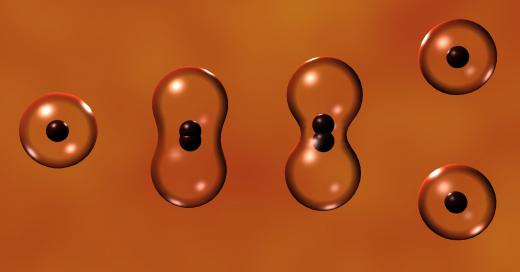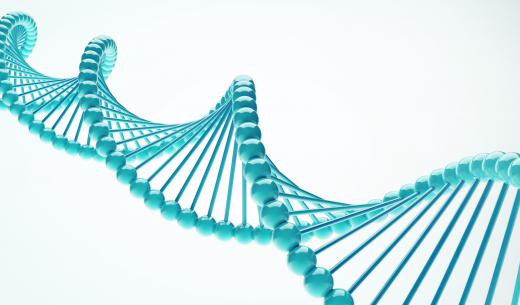What are Cell Cycle Stages?
Cell cycle stages, also called phases, are the components that make up a cell's life cycle. There are four stages in a cell cycle, gap phase 1 (G1), synthesis (S), gap phase 2 (G2), and mitosis (M). Mitosis is further divided into four stages, prophase, metaphase, anaphase, and telophase. Some descriptions of cell cycle stages include a third gap phase, known as G0.
The G1, S, and G2 stages are collectively known as interphase. A cell in the G1 phase is actively growing and undergoing the metabolic changes that are required for cells to divide. The G1 phase ends at the restriction point, when the cell "decides" to undergo division and moves on to the S phase.

All of the cell's DNA is replicated during the synthesis phase of cell cycle stages. During DNA synthesis, or replication, special cell components separate the double-stranded DNA helix into two single strands. An enzyme called DNA polymerase then goes along each template strand of DNA and builds on a second strand to exactly copy the cell's original DNA. Other enzymes in the cell check to make sure the DNA was copied correctly. The end result of synthesis is two exact double-stranded copies of the cell's original DNA, called chromosomes.
Cells prepare for mitosis during the second gap stage. Special materials are required in the cytoplasm of the cell in order for mitosis to occur. The cell undergoes metabolic changes during G2 in order to form these cytoplasmic materials.

After G2, mitosis begins with the prophase stage. A structure known as the mitotic spindle is formed during this phase. Another structure called the centrosome duplicates itself, and the duplicates move to opposite ends of the cell. The chromosomes move toward a region of the mitotic spindle called the metaphase plate, and the centromeres attach to the spindle using structures known as kinetochores. This last step of prophase is sometimes further divided into a stage called prometaphase.

During metaphase, the chromosomes align with the metaphase plate to help the chromosomes separate properly during anaphase. Once the chromosomes are aligned, anaphase occurs as the chromosomes separate and move to opposite ends of the cell. The separated chromosomes are called daughter chromosomes.
Telophase is the final phase of mitosis and of the cell cycle stages. The daughter chromosomes each acquire their own nuclear membranes, and the spindle fibers detach and disappear. Cell division is not complete, however, until cytokinesis occurs and the cell splits completely into two new cells. At this point the cell cycle begins again with G1.
Some researchers include a fifth phase of cell cycle stages. The G0 phase is inserted between mitosis and G1. If cells enter the G0 phase, they are no longer growing. They may, however, become reactivated and enter the G1 phase again.
AS FEATURED ON:
AS FEATURED ON:













Discussion Comments
Some creatures have the ability to regenerate whole limbs. In the case of the starfish, mitosis can be used to regrow a whole section of the body that is lost.
Red blood cells have a very short life span, about four months. This means a high turnaround and your body needs to be constantly working to produce duplicates of a very necessary part of your body's make-up.
Post your comments